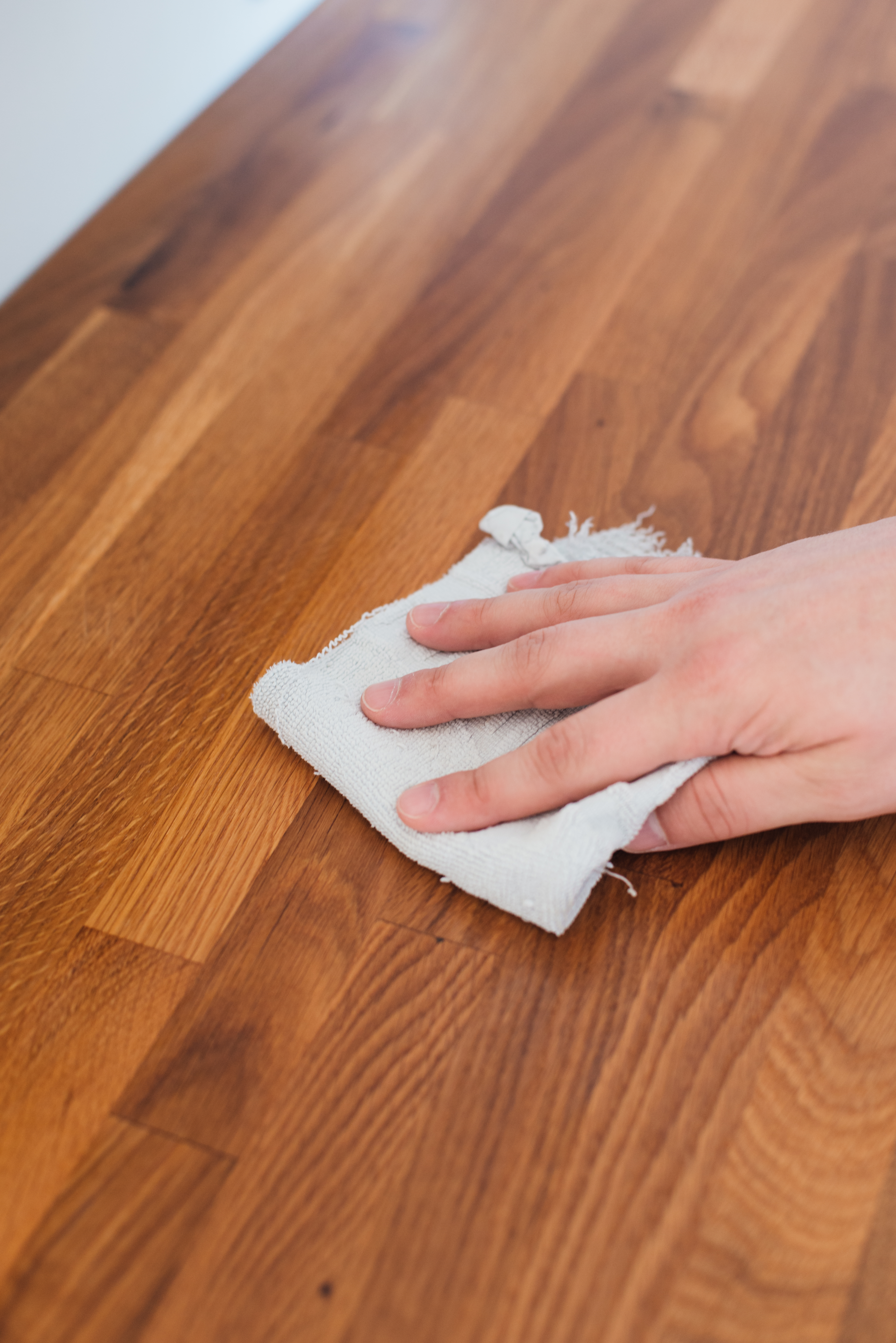
How to Repair Cracks and Scratches in Butcher Block Countertops
Aug 28th 2018
No matter how much you take care of your butcher block countertops, cracks and scratches will inevitably appear over time.
Fortunately, these simple maintenance steps will help you repair scratches and keep your countertops in top condition for many years.
Step 1: Clean the Butcher Block Surface
The first step to repairing a damaged butcher block would be to clean the surface with the appropriate cleaners.
Materials to Clean a Butcher Block:
- Dish Soap
- Warm Water
- Soft Sponge
Instructions:
- Wipe Down Debris: Start by using a dry cloth to wipe down any debris that’s accumulated on the surface.
- Mix the Cleaning Solution: Mix the dish soap with warm water.
- Wash and Rinse the Entire Surface: Wipe down the butcher block thoroughly with the soapy water and then wipe the surface down with non soapy water.
- Dry Countertop Completely: Use a clean towel to dry the surface off entirely before working on covering up the cracks.

Step 2: Sand the Damaged Area
Once your butcher block countertop is clean and dry, the next step would be to sand the area that has damage. Here are the items you’ll need.
Materials to sand a butcher block countertop:
- Sandpaper (medium sandpaper; 80-to 120 grit)
- Sanding block
- Clean cloth
- Shop vacuum for easy cleanup
Instructions
- Sand the damaged area: Attach your sandpaper to a sanding block and move in a circular motion around the area of interest.
- Repeat process: Thoroughly inspect the area that you used the sandpaper on to see if it’s evenly smoothed. Try not to over sand the butcher block because further damage may ensue.
- Clean the surface: Wipe down any debris with a clean, dry cloth

3. Fill in the Cracks
Now that you’ve sanded the area, it’s time to patch the damage with filler.
Materials to fill in the cracks of a butcher block countertop:
- Wood putty
- Glue and sawdust (alternative to wood putty)
- Putty knife
- Dry cloth
Instructions:
- Apply the filler: If the sanding did not fill in the cracks, apply the wood putty or a mixture of glue and sawdust to the crack. If the crack is fairly deep, use a plastic syringe to effectively sink the glue into the space.
- Remove excess filler: Use a putty knife to remove any excess putty before it dries.
- Dry completely: Wipe down any debris and allow your butcher block countertop to dry. Fillers take at most 24 hours to dry.

4. Coat the Butcher Block Countertop Surface with Oil
If your butcher block countertop is sealed with oil, it’s recommended to apply a coat of food-safe mineral oil after you fix the imperfections.
Products needed to surface the butcher block countertop:
- Food-grade mineral oil or butcher block conditioner
- Clean cloth
Instructions:
- Apply the oil to the butcher block: Place a coat of the mineral oil or conditioner onto the butcher block and spread evenly across the board. Allow the oil to soak into the wood as this can take up to several hours.
- Wipe off excess oil: Use a clean cloth to wipe off excess oil, especially in pooled areas of the butcher block.
- Repeat if necessary: For butcher blocks that have been well-used, apply multiple coats of the mineral oil until you are satisfied with the results.

Knowing When It Is Time to Retire Your Butcher Block
Like all things in life, butcher block counters eventually reach the end of their journey. Despite their sturdy construction, there comes a time when even the most reliable countertop must be replaced.
Here are signs to look out for when it’s time to shop for a new butcher block:
- Deep cuts or indentations: Over time, frequent use can create indentations on the surface of the countertop. These indentations can become breeding grounds for bacteria, making thorough cleaning more challenging than rewarding.
- Continuous cracks: While wood glue can offer a temporary fix, ongoing cracking signals the need for a replacement.
- Warping: If your countertop is starting to bend, it's a sign it's nearing the end of its life and may be unsafe for use.
Unlike granite or laminate, retiring a butcher block countertop doesn’t necessarily mean the end of its usefulness. Get creative and repurpose your countertop into cutting boards, floating shelves, a custom chess board, or even a step stool. The possibilities are endless!
Learn More About Butcher Block
We have decades of experience crafting butcher block and a wealth of knowledge to share.
Check out our full butcher block countertop care and maintenance guide for more tips. You can also always contact us with questions as you decide whether butcher block is the right choice for your home.





